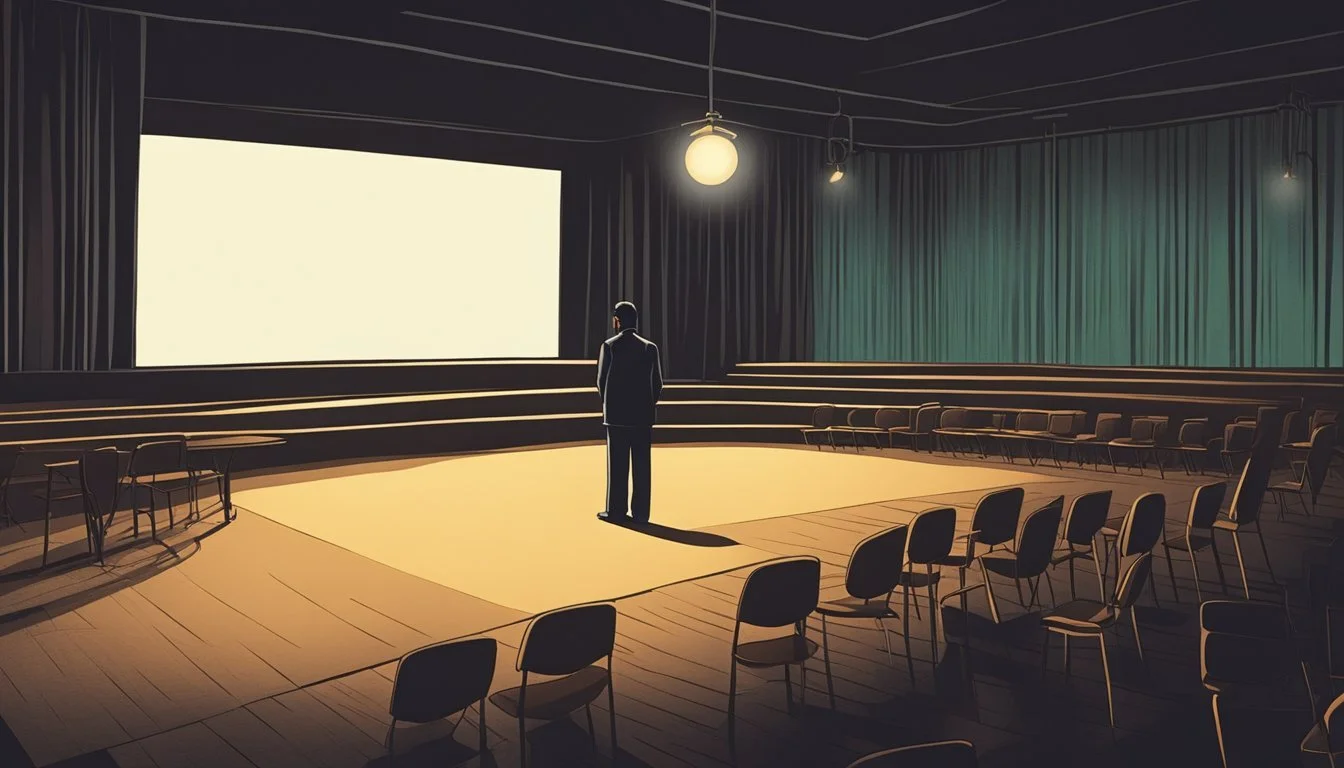Hollywood's Tragic Star: Marilyn Monroe's Battle with Clinical Depression
The Hidden Struggle Behind the Glamour
Marilyn Monroe, the iconic Hollywood star, captivated audiences with her dazzling beauty and talent. Behind the glamorous facade, however, lay a woman struggling with deep-rooted mental health issues. Monroe battled clinical depression throughout her life, a condition that significantly impacted her personal and professional experiences.
The pressures of fame, childhood trauma, and industry expectations took a heavy toll on Monroe's psychological well-being. She reportedly sought treatment for her mental health struggles, including time spent in psychiatric facilities. Despite her public image as a vivacious blonde bombshell, Monroe grappled with intense feelings of sadness, anxiety, and loneliness.
Monroe's battle with depression ultimately contributed to her untimely death at the age of 36. Her story serves as a poignant reminder of the hidden struggles many celebrities face and the importance of mental health awareness. The contrast between her public persona and private pain continues to fascinate and move audiences decades after her passing.
Early Life and Formative Years
Marilyn Monroe's early years were marked by instability and hardship. Her experiences in foster care and the trauma she endured shaped her future struggles with mental health.
Childhood in Foster Homes
Born Norma Jeane Mortenson on June 1, 1926, in Los Angeles, Monroe never experienced a stable family life. Her mother, Gladys Baker, placed her in foster care when she was just two weeks old.
Monroe spent her childhood moving between foster homes and an orphanage. This constant upheaval left deep emotional scars and contributed to her later struggles with depression.
In one foster home, Monroe faced sexual abuse, a traumatic experience that haunted her throughout her life. The lack of a consistent, nurturing environment during her formative years had a profound impact on her sense of self-worth and security.
Norma Jeane Mortenson: Becoming Marilyn Monroe
At 16, Norma Jeane married to escape the foster care system. This marked the beginning of her transformation into Marilyn Monroe.
She began working in a factory during World War II, where she was discovered by a photographer. This chance encounter set her on the path to stardom.
Monroe's early modeling career led to small film roles. She dyed her hair blonde and changed her name to Marilyn Monroe, creating the persona that would captivate the world.
Despite her rising fame, the insecurities and traumas of her childhood continued to affect her. These early experiences laid the foundation for her lifelong battle with depression and anxiety.
Rise to Fame
Marilyn Monroe's ascent to stardom was a remarkable journey marked by determination and talent. Her transformation from an unknown model to a global icon showcased her versatility and charisma.
First Big Breaks in Modeling and Acting
Monroe's career began in 1944 when she was discovered while working in a radio plane factory. Her striking looks caught the attention of a photographer, leading to modeling opportunities. She soon graced the covers of numerous magazines, captivating audiences with her natural beauty and charm.
In 1946, Monroe signed her first film contract with 20th Century Fox. Though initially given minor roles, her screen presence was undeniable. She took acting classes to hone her craft, demonstrating a commitment to improving her skills beyond her looks.
Breakthrough Roles and Critical Acclaim
Monroe's breakthrough came with her role in "All About Eve" (1950), where her small but memorable part garnered attention. Her performance in "Niagara" (1953) further established her as a serious actress.
"Gentlemen Prefer Blondes" (1953) catapulted Monroe to superstardom. Her portrayal of Lorelei Lee showcased her comedic timing and musical talents. Critics praised her performance, recognizing her ability to bring depth to seemingly superficial characters.
"Some Like It Hot" (1959) solidified Monroe's status as a versatile actress. Her role as Sugar Kane Kowalczyk earned her a Golden Globe for Best Actress in a Comedy.
Iconic Symbol: Blonde Bombshell
Monroe's platinum blonde hair and curvaceous figure became her trademark, defining the "blonde bombshell" archetype. Her sensual yet innocent persona captivated audiences worldwide.
She carefully crafted her image, combining glamour with vulnerability. This unique blend made her relatable to many, despite her larger-than-life status.
Monroe's fashion choices, particularly her famous white dress from "The Seven Year Itch" (1955), became iconic. Her style influenced trends and continues to inspire fashion today.
Her impact extended beyond film, as she became a symbol of femininity and sexuality in 1950s America. Monroe's enduring legacy as a cultural icon speaks to her profound influence on popular culture.
Personal Struggles
Marilyn Monroe's life was marked by profound personal challenges that contrasted sharply with her glamorous public image. Her struggles with mental health and relationships shaped her private world in ways few understood.
Public Persona vs Private Battles
Monroe's dazzling on-screen presence masked deep-seated emotional turmoil. She battled clinical depression and anxiety throughout her life. These conditions often left her feeling isolated and misunderstood.
Monroe sought help from psychiatrists and engaged in therapy to cope with her mental health issues. Despite her efforts, she continued to struggle with emotional instability.
Her childhood trauma and unstable upbringing contributed significantly to her adult mental health challenges. Monroe's mother's institutionalization left lasting scars on her psyche.
Turbulent Relationships
Monroe's romantic life was characterized by a series of tumultuous partnerships. Her marriages to James Dougherty, Joe DiMaggio, and Arthur Miller were marked by intense highs and lows.
These relationships often exacerbated her existing mental health issues. The pressures of public scrutiny and expectations took a toll on her marriages.
Monroe's substance abuse problems further complicated her personal life. She often turned to alcohol and prescription medications to cope with her emotional pain.
Her relationships with DiMaggio and Miller were particularly significant. Both men attempted to support her through her struggles, but ultimately, the marriages ended in divorce.
Marilyn's Mental Health
Marilyn Monroe's iconic status masked a complex inner struggle with mental health issues. Her battles with depression and anxiety shaped her life and career in profound ways.
Clinical Depression and Anxiety
Monroe suffered from severe clinical depression throughout her adult life. She experienced frequent mood swings and periods of intense sadness. Her anxiety manifested in chronic insomnia and panic attacks, often interfering with her work on film sets.
To cope, Monroe sought therapy from various psychiatrists, including Dr. Ralph Greenson. She underwent psychoanalysis and took prescribed medications, though these treatments had mixed results.
Her mental health struggles impacted her relationships and career. Monroe often arrived late to film shoots or missed work entirely due to her symptoms. This led to a reputation for being difficult and unreliable in Hollywood circles.
Rumors and Realities of Schizophrenia
Speculation about Monroe's mental state has persisted for decades, including rumors of schizophrenia. However, there is no concrete evidence that she was diagnosed with this condition.
Some symptoms attributed to Monroe, such as paranoia and mood instability, overlap with her documented depression and anxiety. These may have been misinterpreted or exaggerated in popular accounts.
Mental health experts today suggest Monroe likely suffered from a mood disorder, possibly bipolar disorder or borderline personality disorder. These conditions better explain her emotional volatility and relationship patterns.
It's crucial to approach claims about Monroe's mental health with caution, relying on factual accounts rather than sensationalized stories.
Pinnacle Works and Career Highlights
Marilyn Monroe's acting career reached extraordinary heights, producing iconic performances that solidified her status as a Hollywood legend. Her impact on cinema extended far beyond her lifetime, influencing generations of actors and filmmakers.
Iconic Performances and Roles
Monroe's breakthrough role came in 1950 with "All About Eve." She went on to star in critically acclaimed films like "Niagara" and "Gentlemen Prefer Blondes." Her performance in "The Seven Year Itch" became legendary, especially the scene with her white dress billowing over a subway grate.
"Some Like It Hot" showcased Monroe's comedic talents and earned her a Golden Globe. She delivered a powerful dramatic performance in "The Misfits," her final completed film.
Persistent Impact on Cinema
Monroe's influence on cinema remains profound decades after her passing. Her unique blend of vulnerability and sensuality redefined Hollywood glamour and femininity.
Filmmakers continue to draw inspiration from her work, with numerous documentaries and biopics exploring her life and career. Monroe's image graces countless posters and merchandise, cementing her place in pop culture.
Her performances in New York and Los Angeles theaters paved the way for future actors to transition between stage and screen. Monroe's enduring legacy serves as a testament to her talent and the indelible mark she left on the entertainment industry.
Tragic Demise and Aftermath
Marilyn Monroe's life came to an abrupt end in August 1962, shocking the world. Her death and the circumstances surrounding it left an indelible mark on popular culture.
Circumstances of Death: Overdose and Suicide
Marilyn Monroe died on August 5, 1962, at her home in Los Angeles. The official cause of death was acute barbiturate poisoning, ruled as a probable suicide. She was found unresponsive in her bedroom, with empty pill bottles nearby.
The actress had a history of depression and substance abuse. In the weeks leading up to her death, Monroe had been struggling with personal and professional issues. Her untimely passing at age 36 fueled speculation and conspiracy theories that persist to this day.
Legacy and Influence in Pop Culture
Monroe's impact on popular culture has endured long after her death. Her image remains an iconic symbol of glamour and beauty. She received a posthumous star on the Hollywood Walk of Fame in 1960.
Monroe's struggles with mental health and the pressures of fame have gained renewed attention in recent years. The #MeToo movement has sparked discussions about her experiences in the film industry.
Her films continue to be celebrated, and her story has been retold in numerous books, documentaries, and biopics. Monroe's enduring legacy serves as a reminder of both the allure and the pitfalls of stardom.
Cultural and Societal Impact
Marilyn Monroe's influence extended far beyond her film roles, shaping perceptions of femininity and challenging societal norms. Her image and experiences continue to resonate in popular culture, sparking discussions on gender, sexuality, and mental health.
Representations of Women in Media
Monroe's portrayal as a "dumb blonde" in films reinforced stereotypes, yet her off-screen persona revealed a complex individual. Her iconic status as a sex symbol influenced beauty standards for decades. The "blonde bombshell" image she popularized became a cultural touchstone, inspiring countless imitations in fashion and entertainment.
Monroe's famous "Happy Birthday" performance for President Kennedy blurred the lines between celebrity and politics. Her Playboy cover and nude calendar photos pushed boundaries of acceptable female representation in the 1950s, contributing to changing attitudes about sexuality.
From Dumb Blonde to Complex Individual
As public awareness of Monroe's struggles with mental health and sexual abuse grew, perceptions of her shifted. Her tragic life story and untimely death added depth to her public image. This evolution challenged simplistic "dumb blonde" stereotypes and sparked conversations about the treatment of women in Hollywood.
Monroe's friendship with Ella Fitzgerald highlighted her advocacy against racial discrimination. Her support for Fitzgerald's career demonstrated a commitment to equality that went beyond her on-screen persona. This facet of her life has contributed to a more nuanced understanding of her character and legacy.




